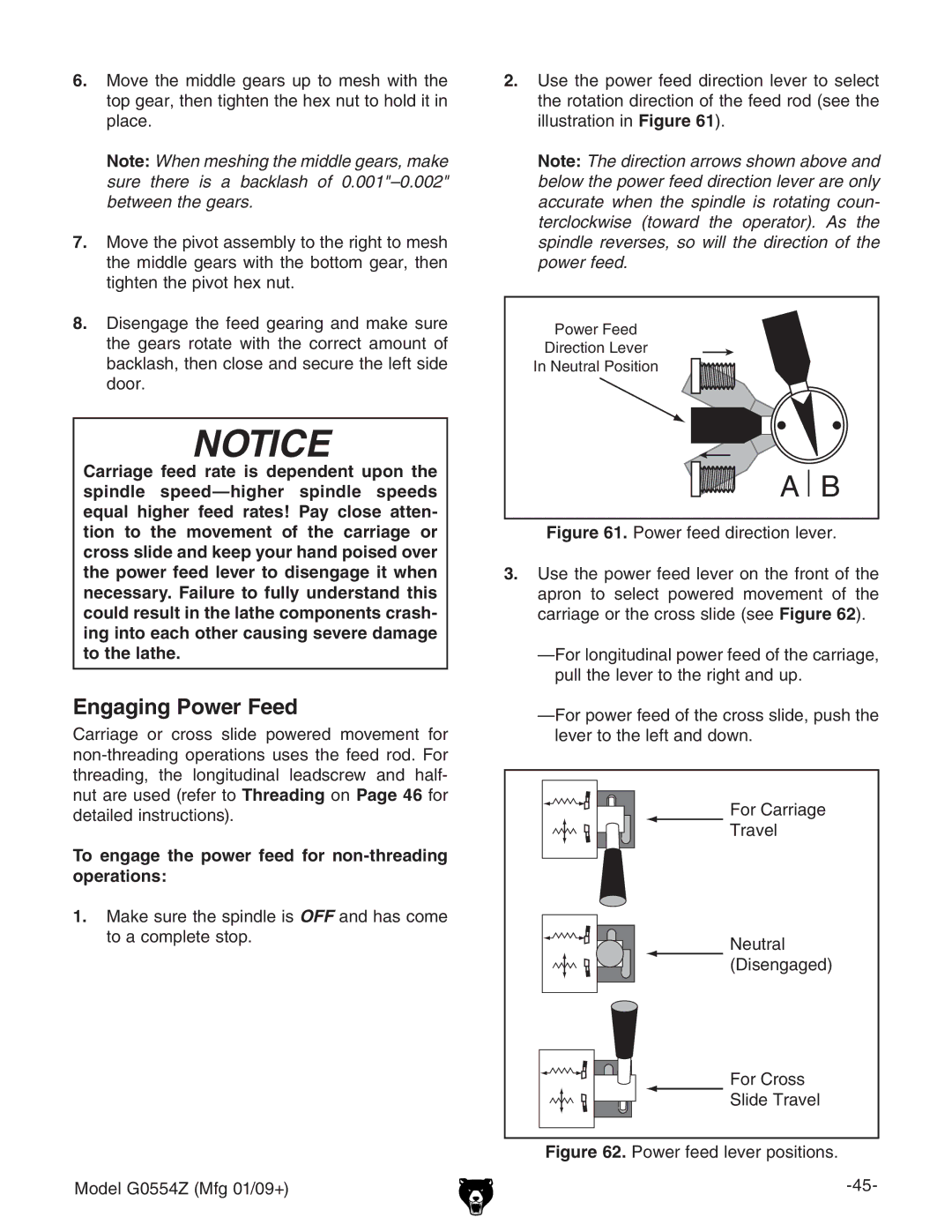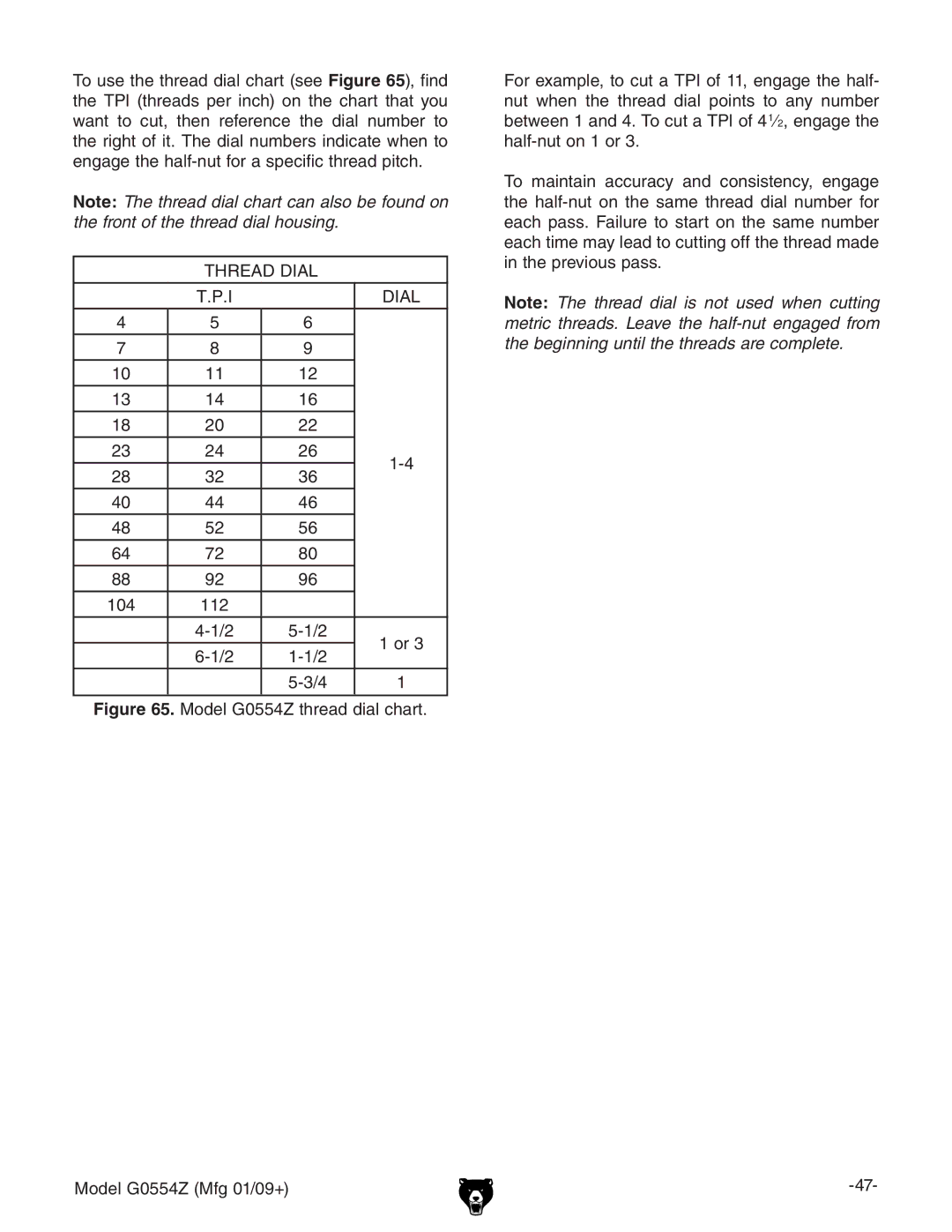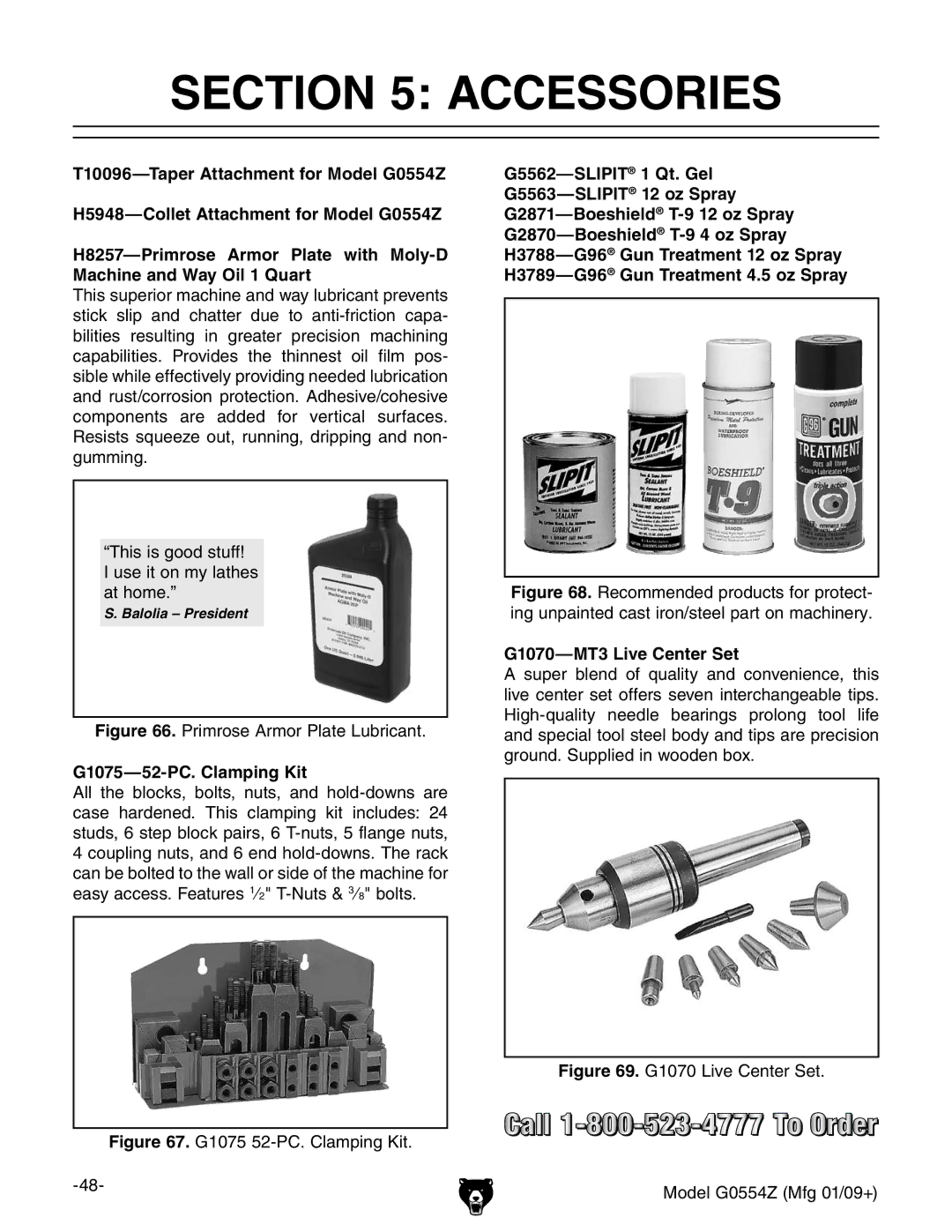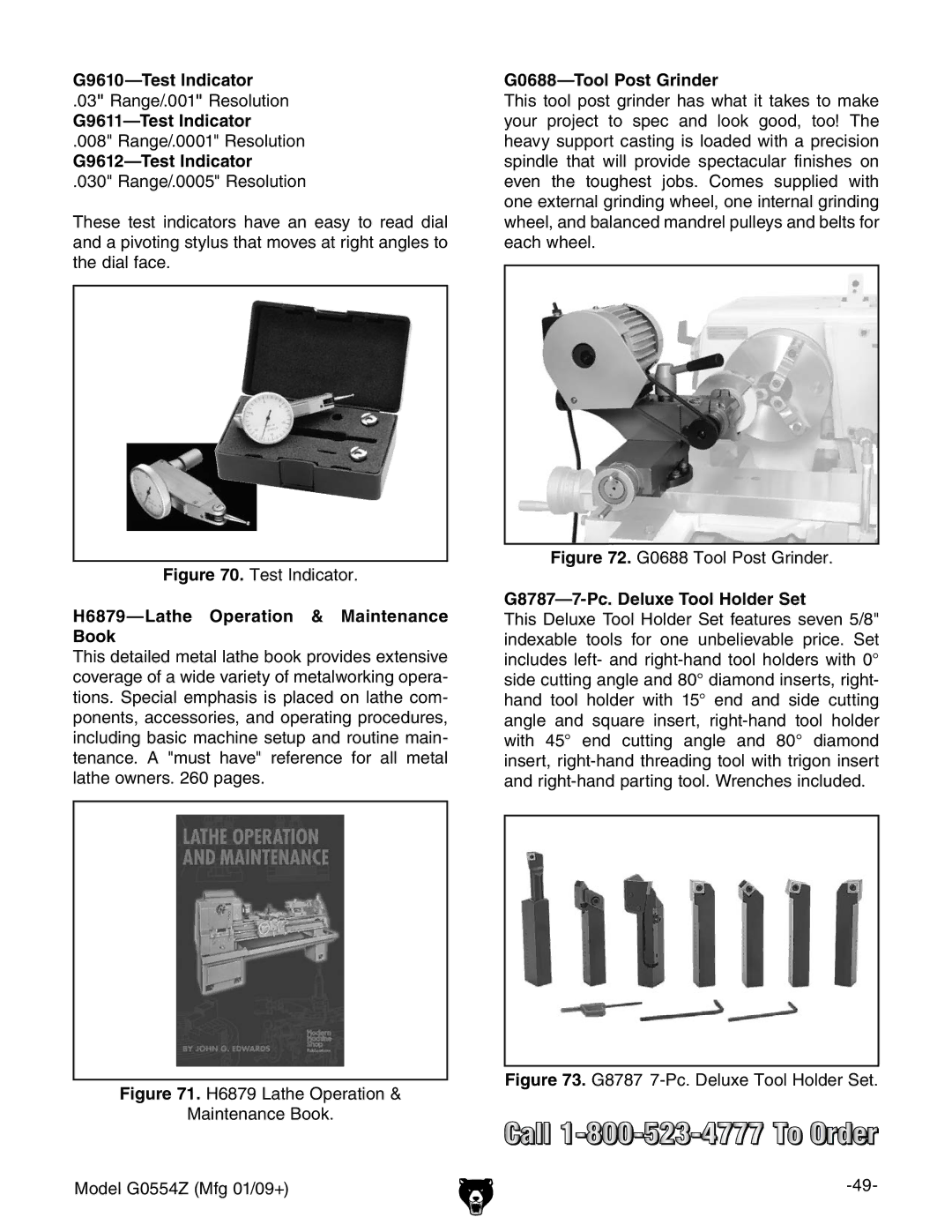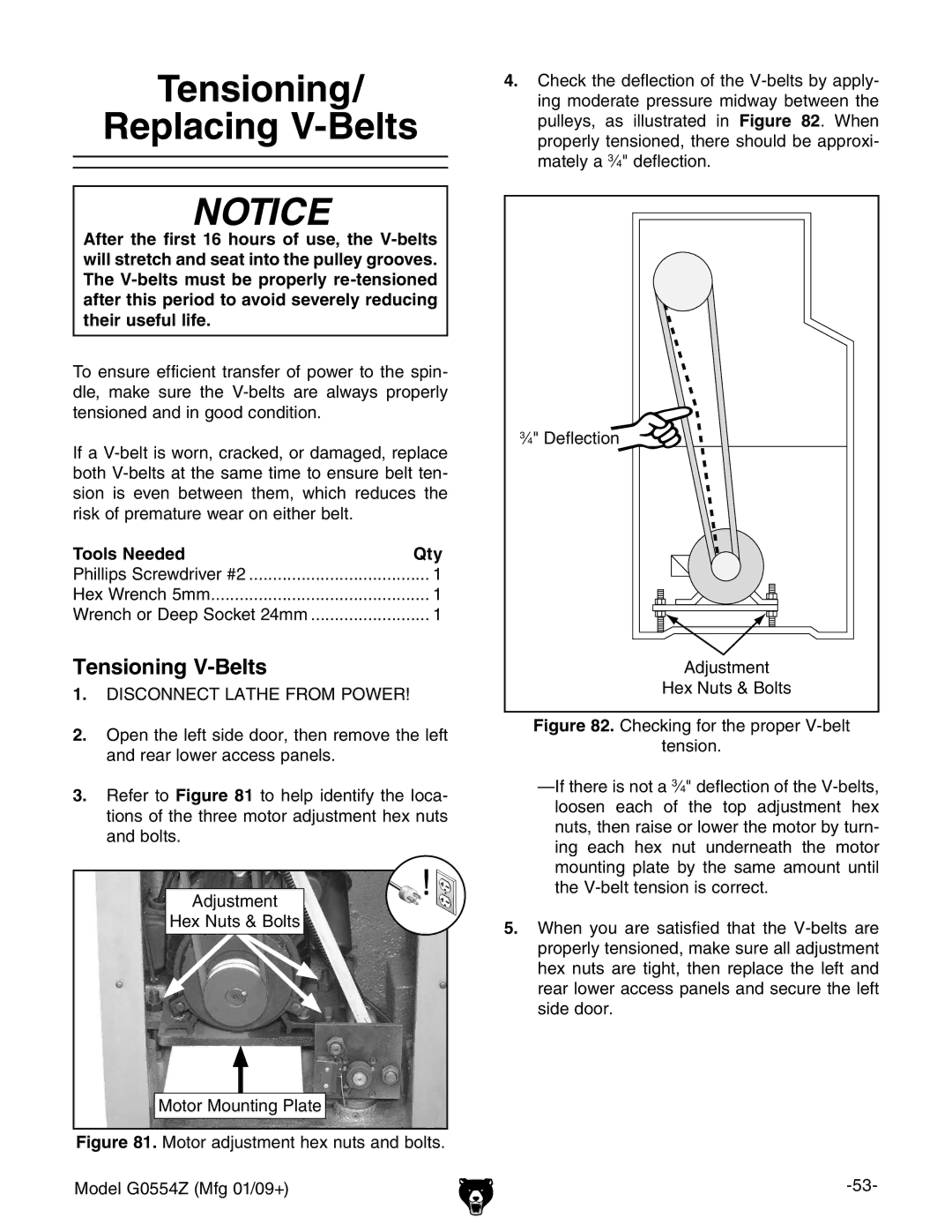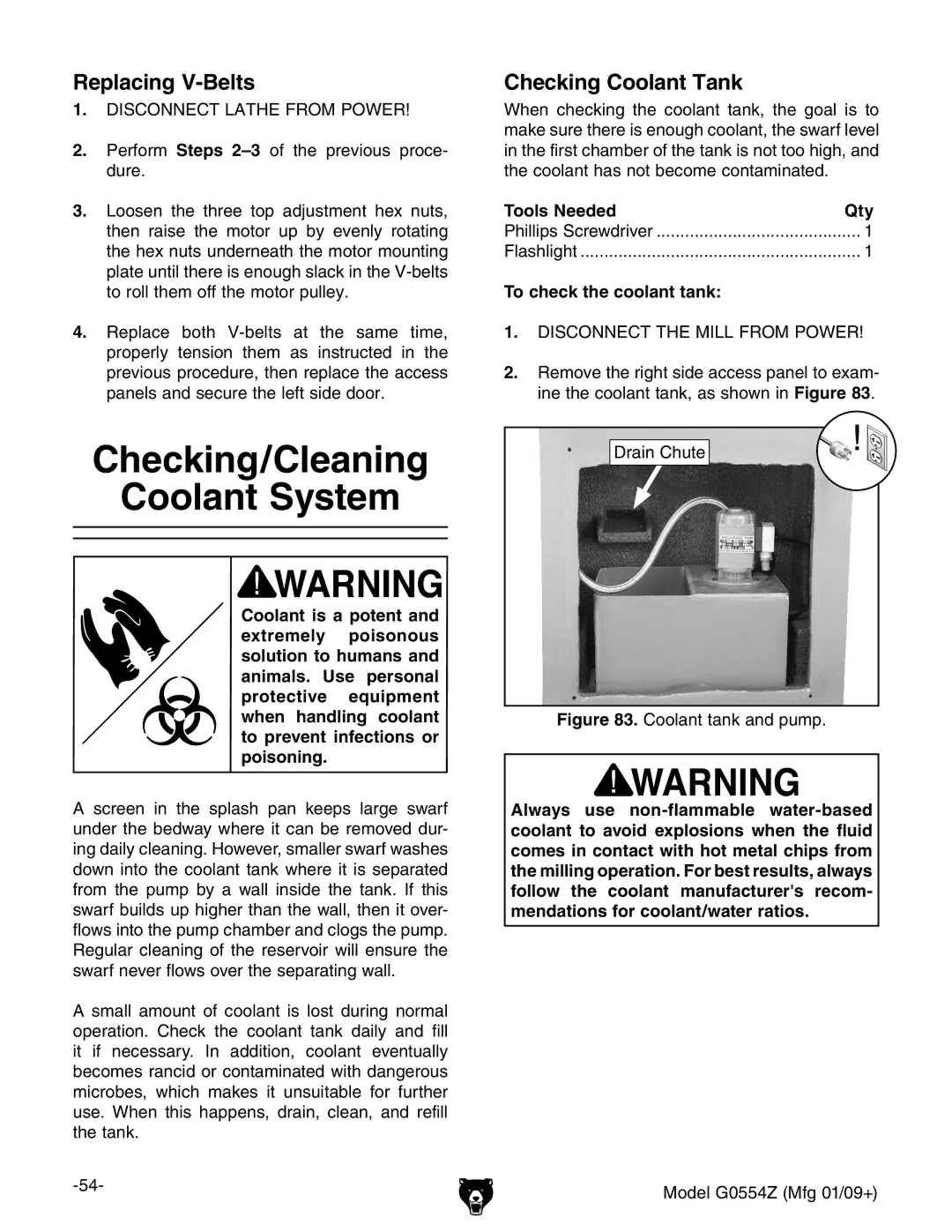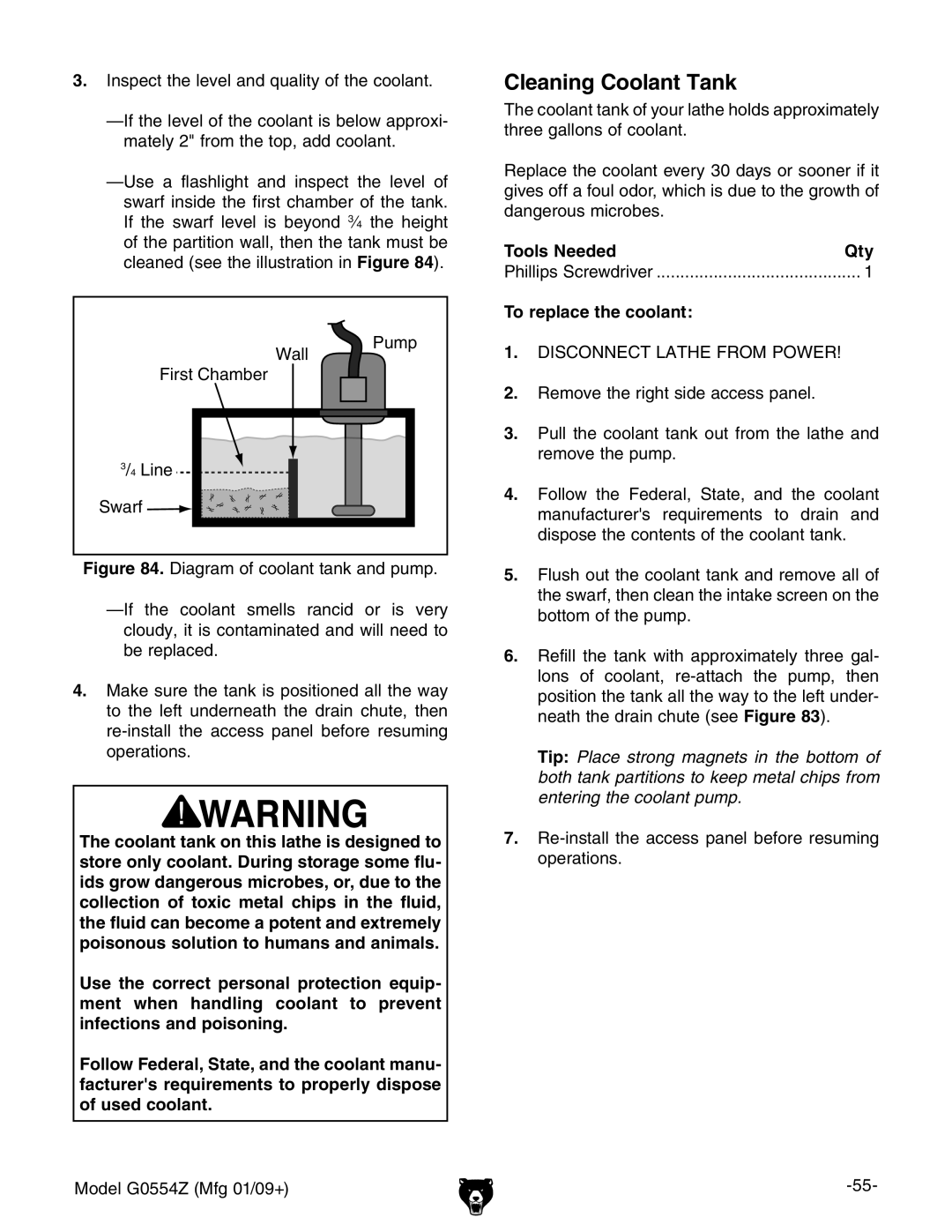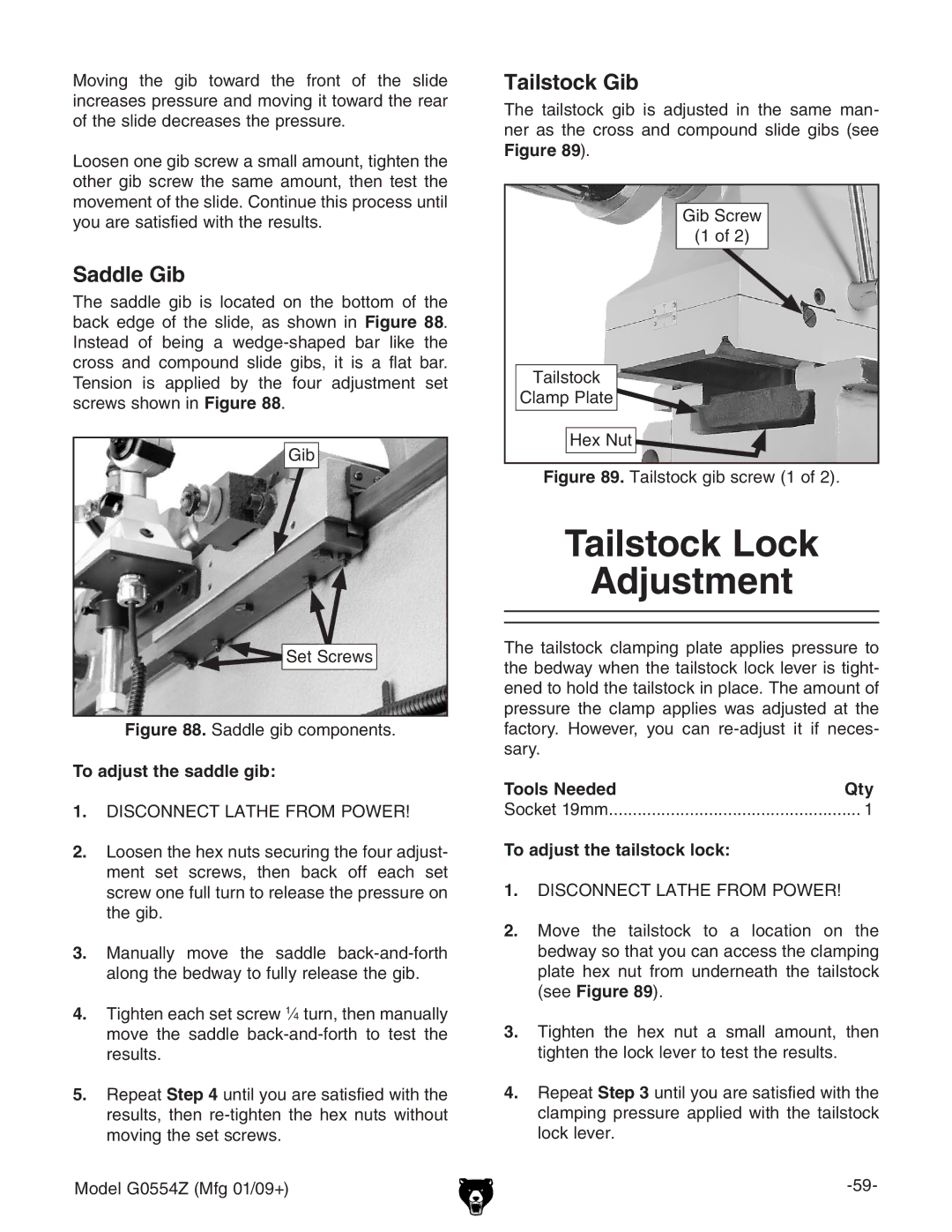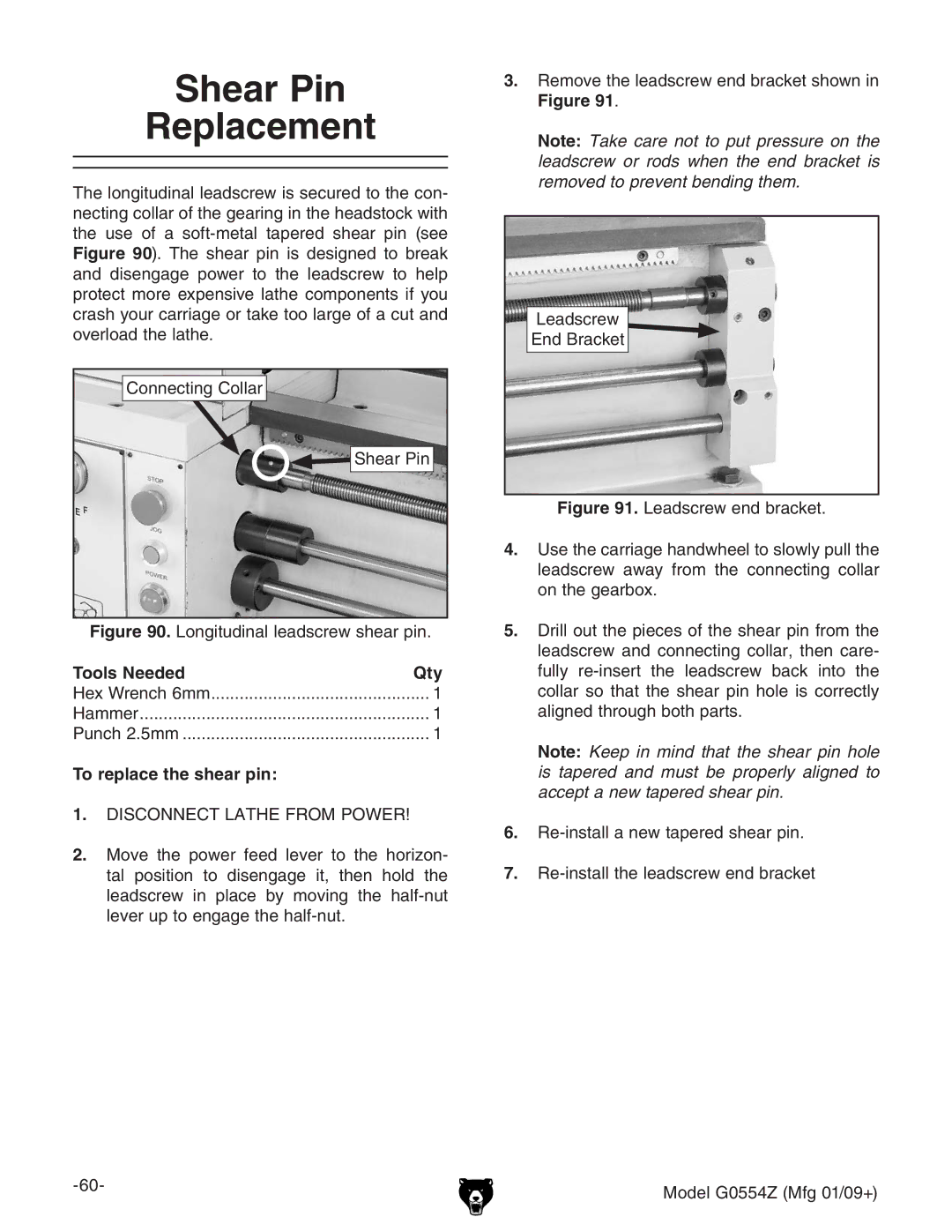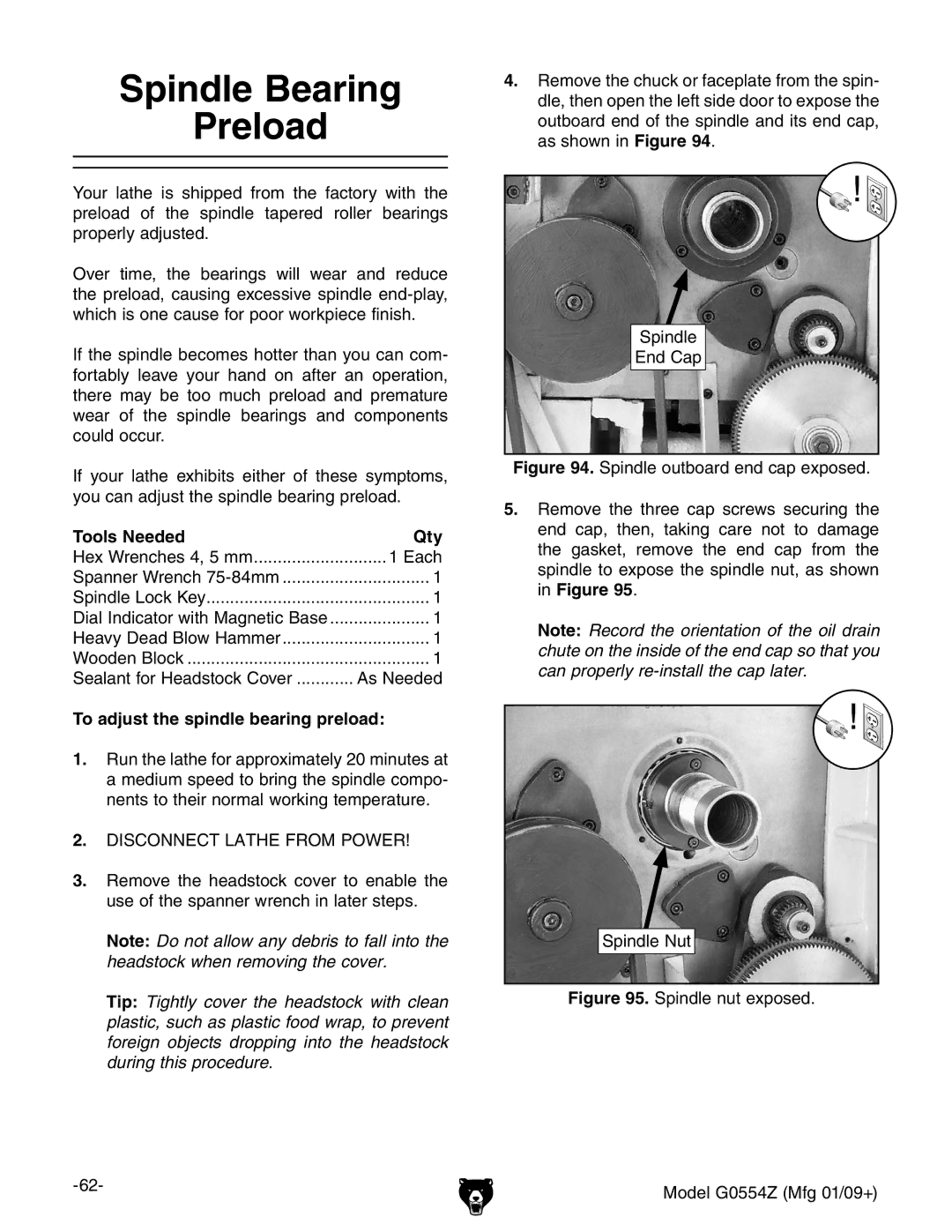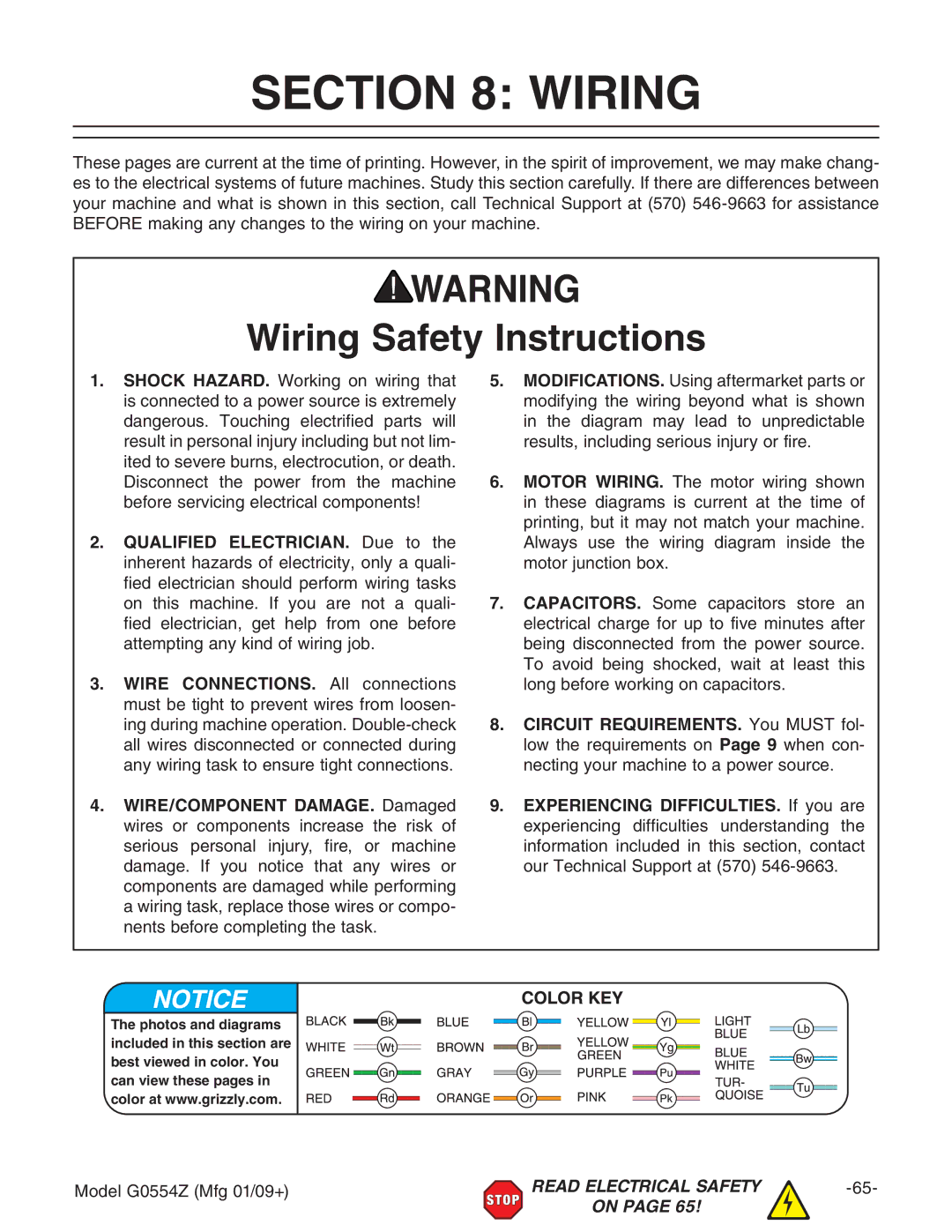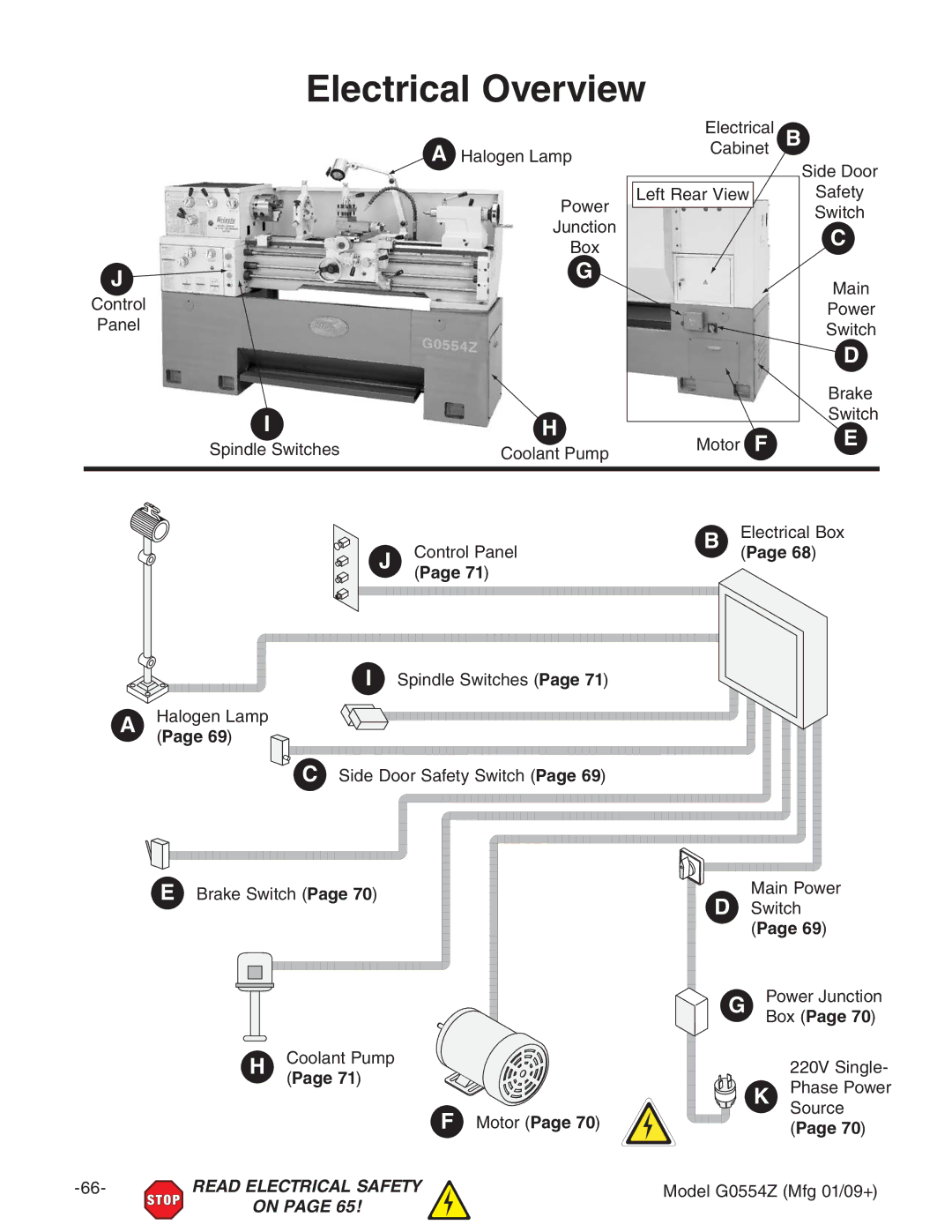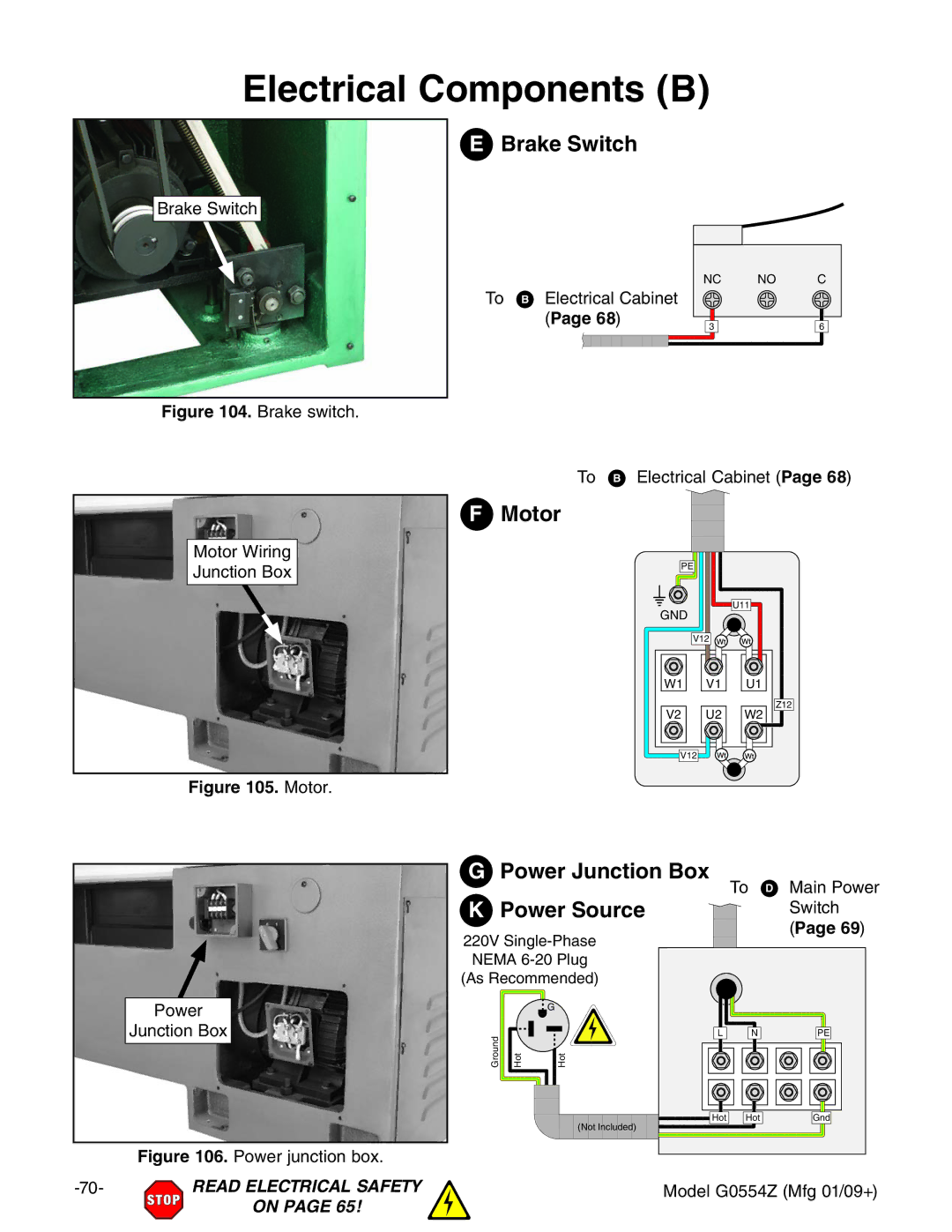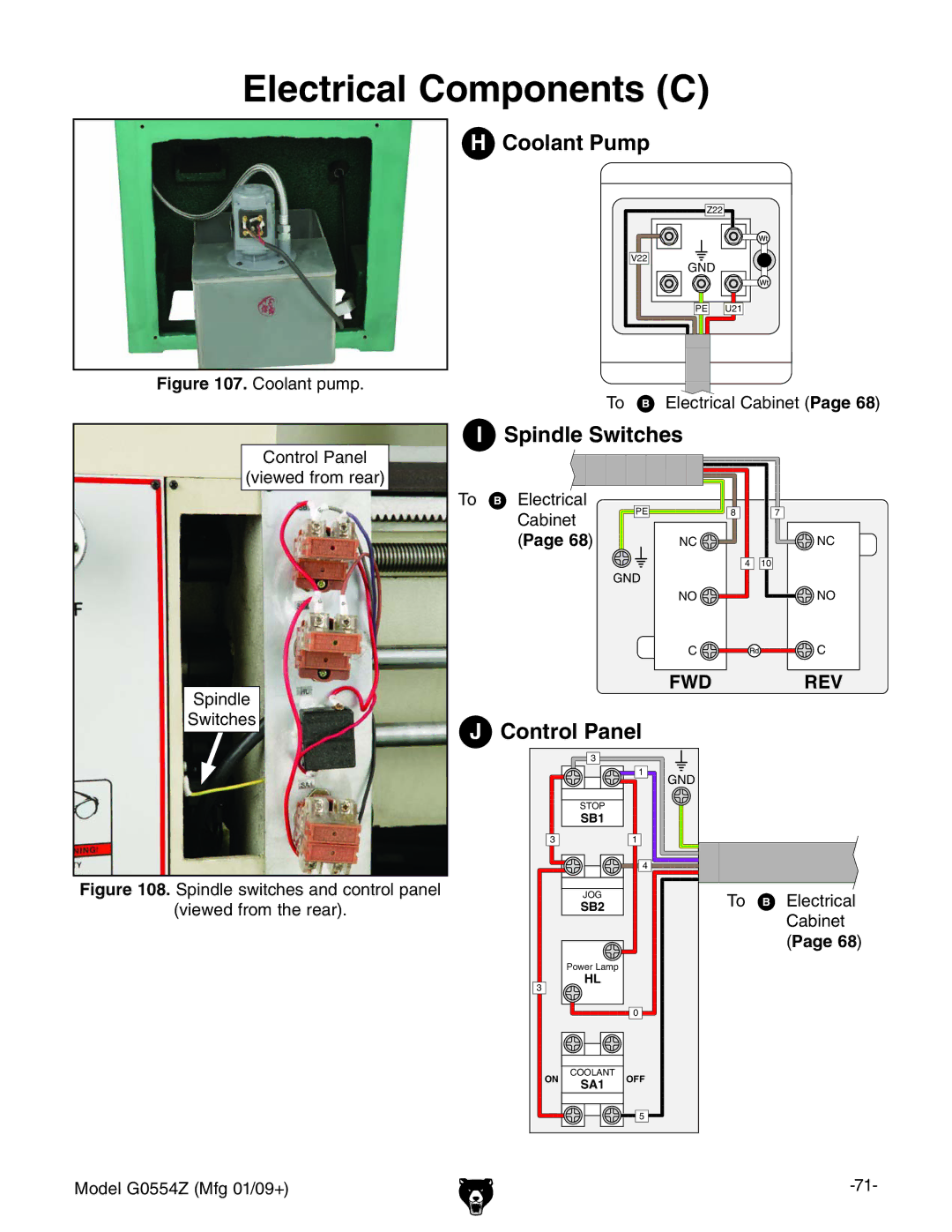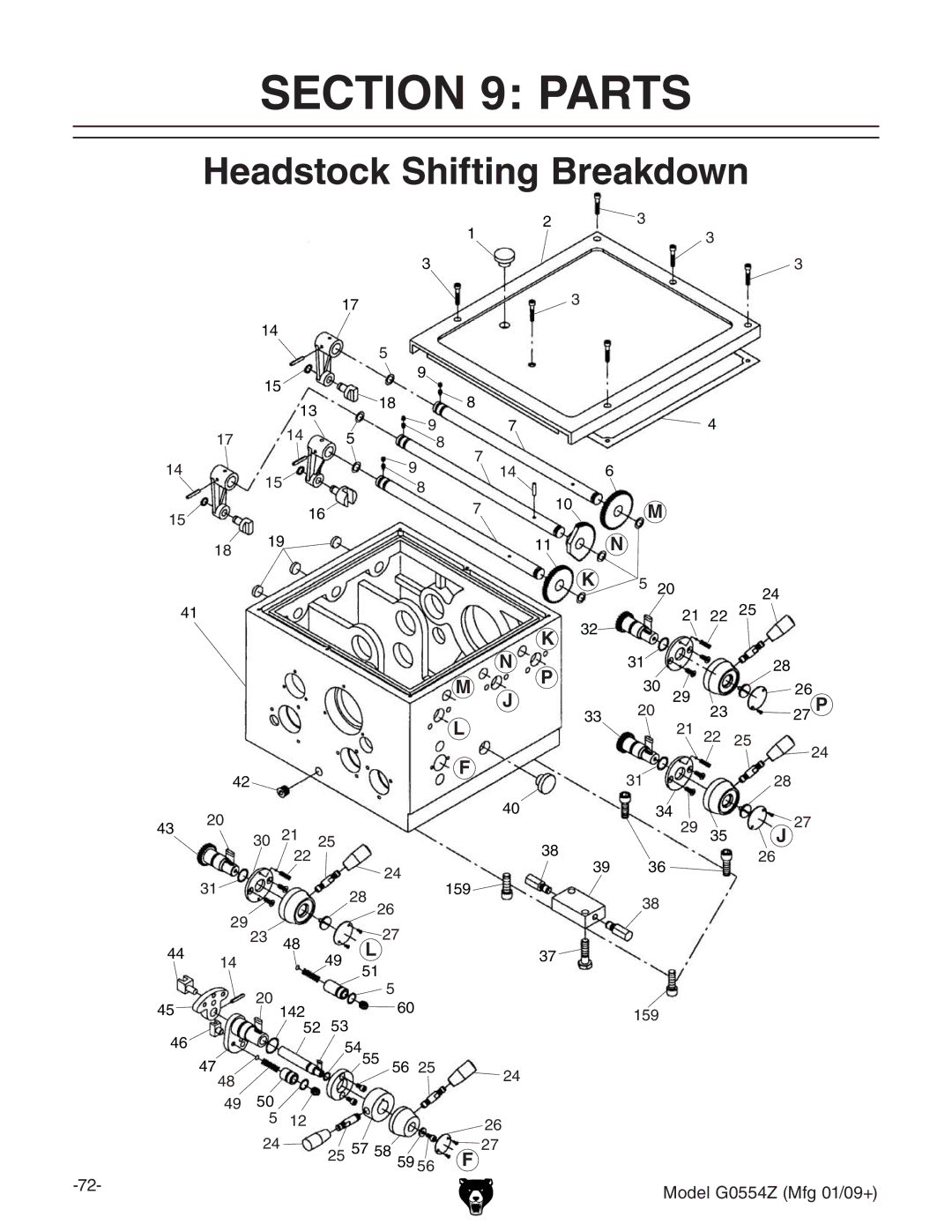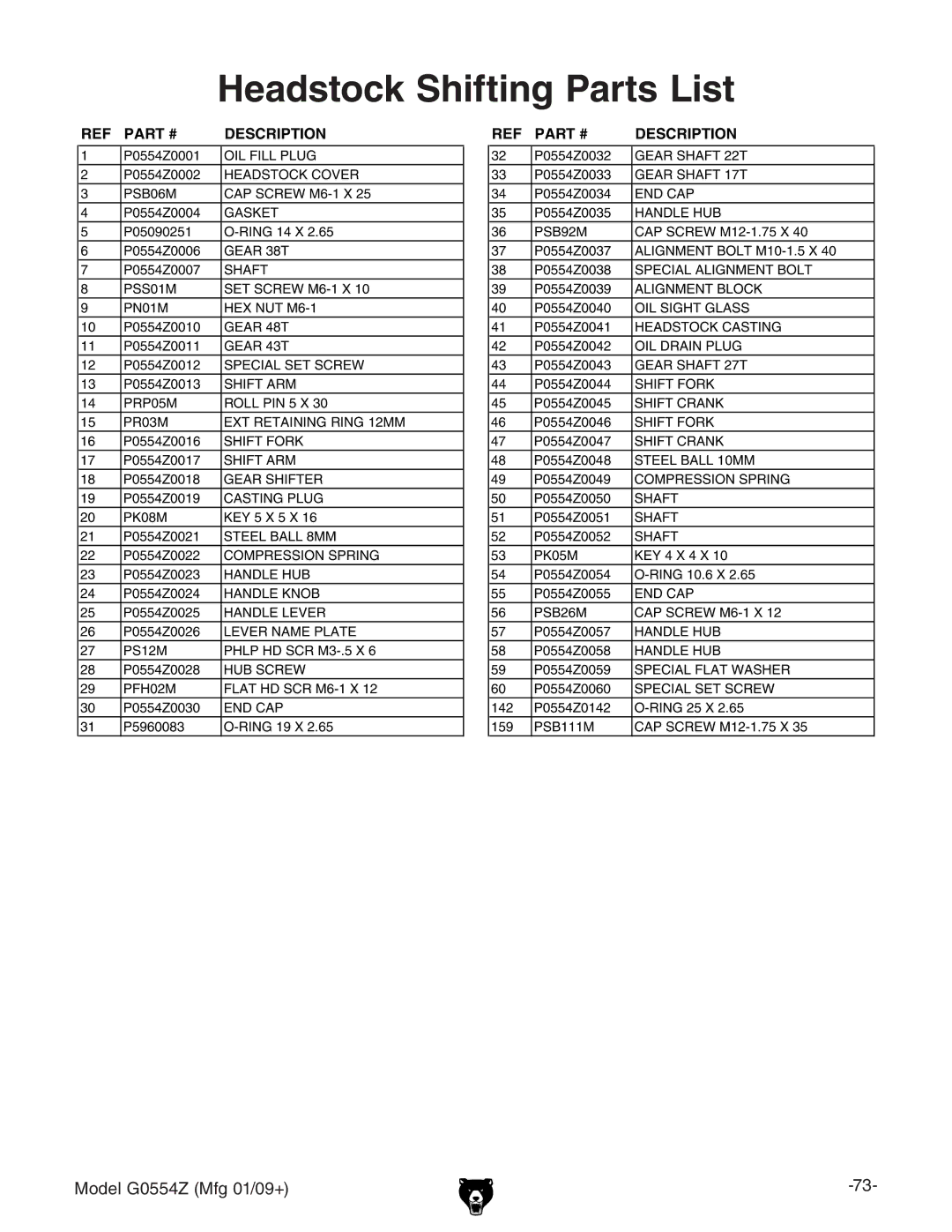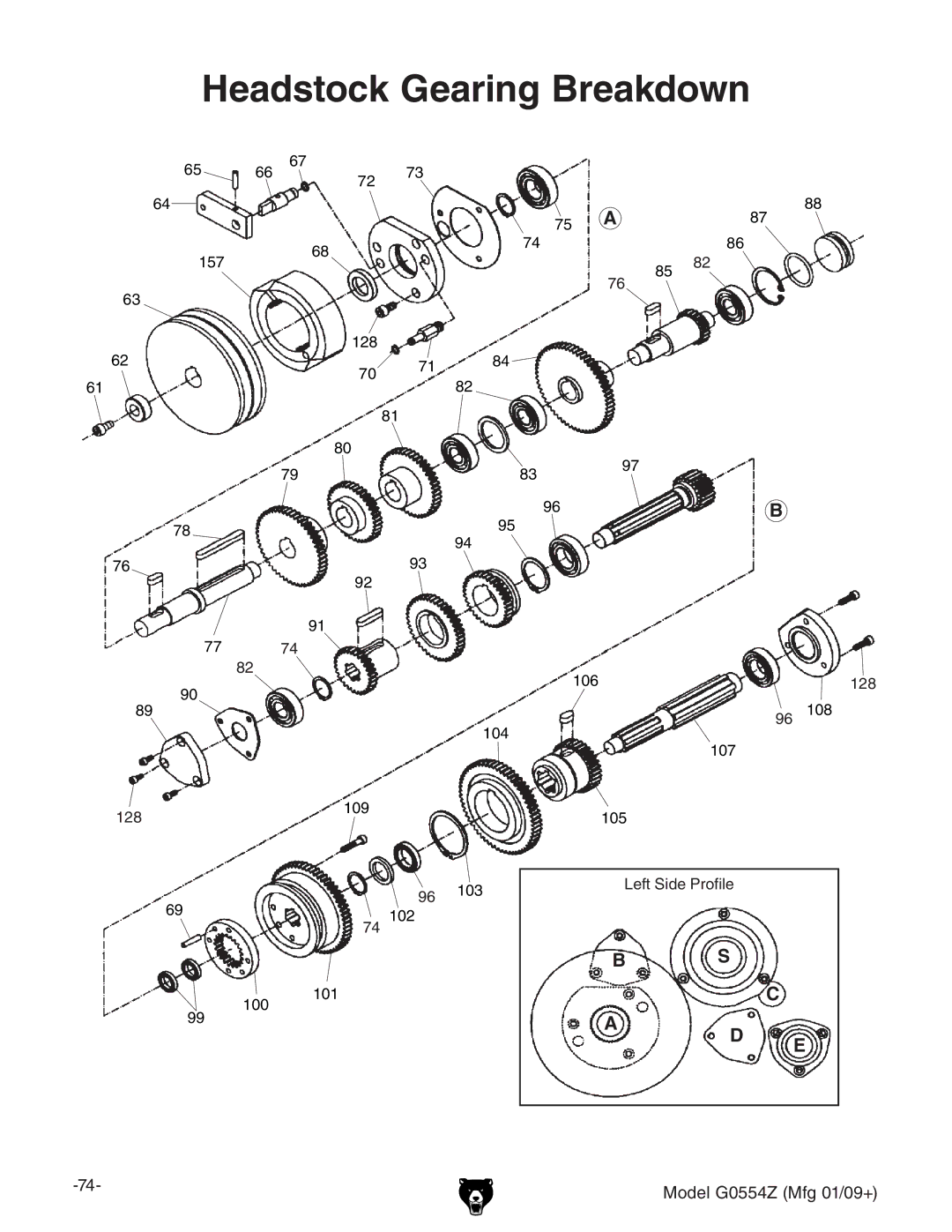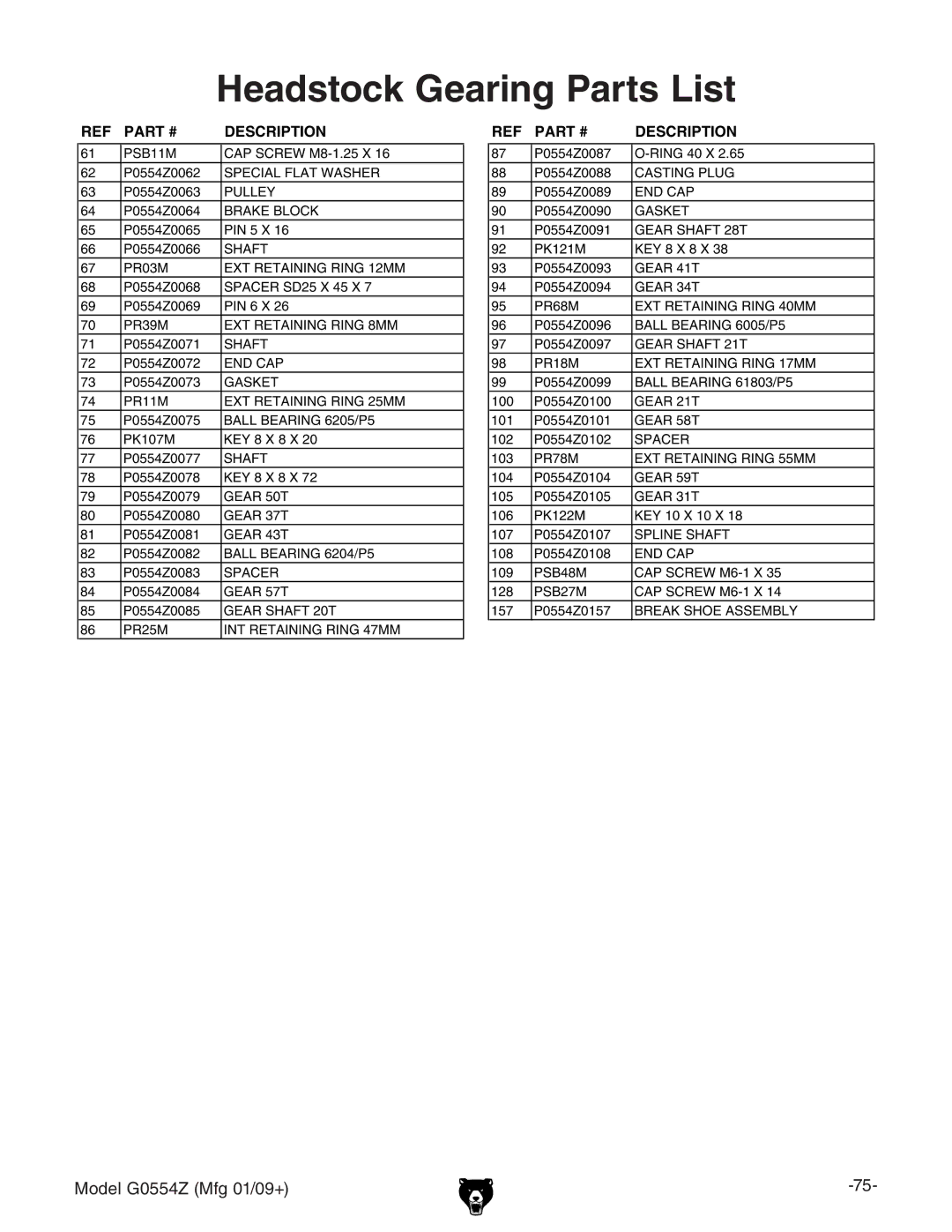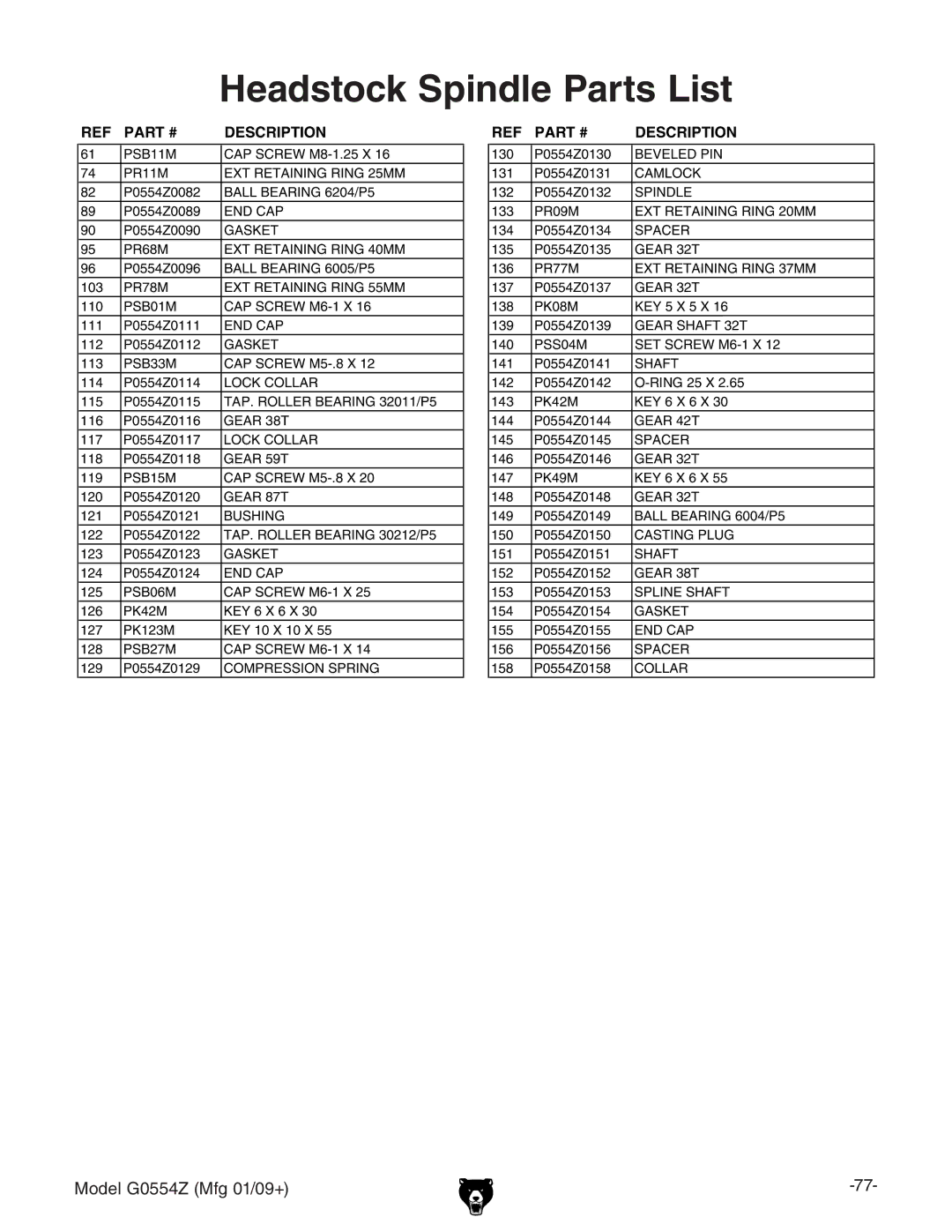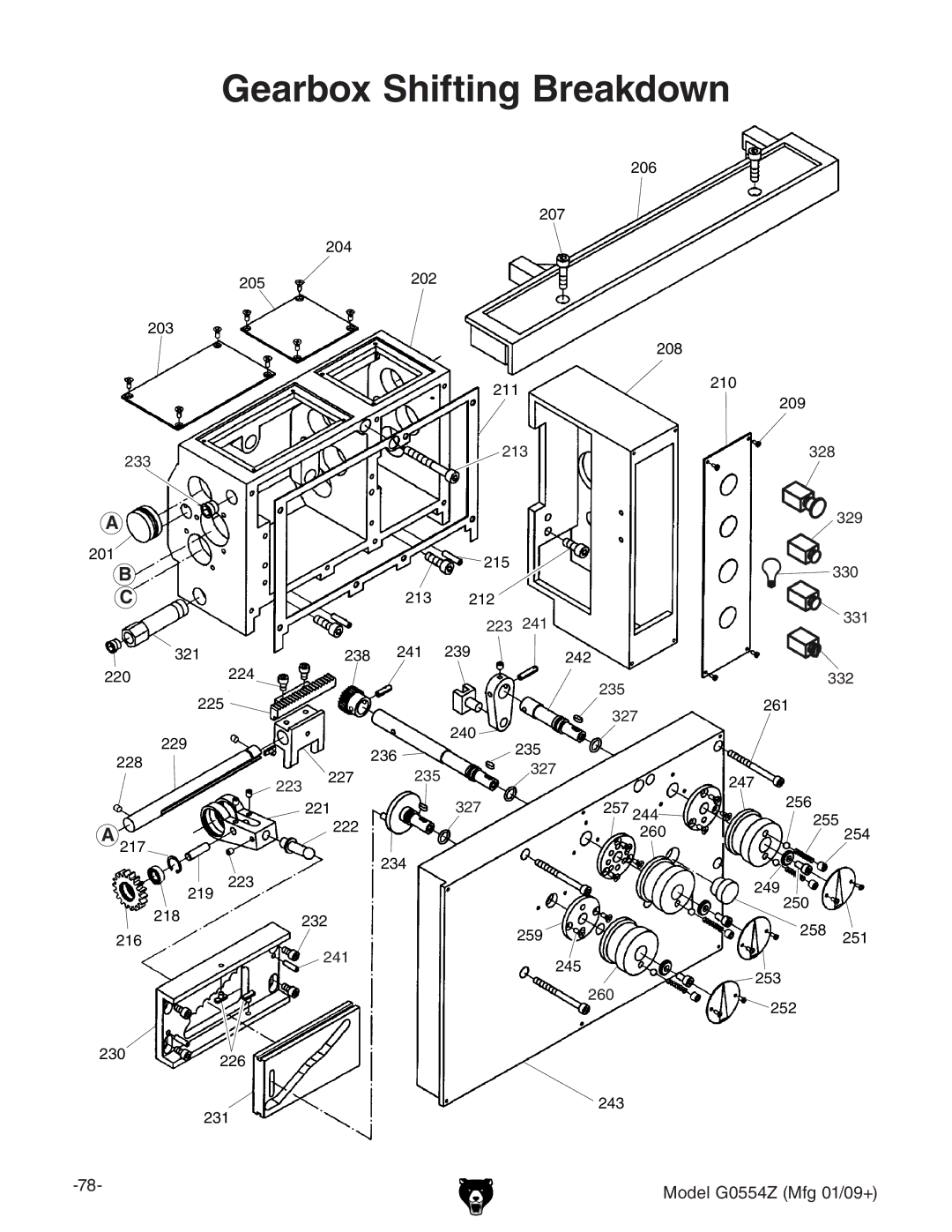
Operation and Work Results
Symptom | Possible Cause | Possible Solution | ||
Bad surface | 1. | Incorrect spindle speed or feed rate. | 1. | Adjust for proper spindle speed and feed rate. |
finish. | 2. | Dull tool or poor tool selection. | 2. | Use sharp tools; use correct tool for the operation. |
| 3. | Depth of cut too great. | 3. | Reduce depth of cut and take more passes. |
| 4. | Too much play in gibs. | 4. | Adjust gibs (Page 58). |
| 5. | Tool too high. | 5. | Lower tool position. |
|
|
|
|
|
Entire machine | 1. | Workpiece is unbalanced. | 1. | Reinstall workpiece so it is as centered with the |
vibrates |
|
|
| spindle bore as possible. |
excessively upon | 2. | Worn or broken gear present. | 2. | Inspect gears and replace if necessary. |
startup and while | 3. | Chuck or faceplate has become unbalanced. | 3. | |
running. |
|
|
| local machine shop for help. |
| 4. | Spindle bearings at fault. | 4. | Tighten or replace spindle bearings (Page 62). |
|
|
|
|
|
Cutting tool | 1. | Tool holder not tight enough. | 1. | Check for debris, clean, and retighten. |
or machine | 2. | Cutting tool sticks too far out of tool holder; | 2. | Reinstall cutting tool so no more than 1⁄3 of the total |
components |
| lack of support. |
| length is sticking out of tool holder and it is secured |
vibrate |
|
|
| by at least two post bolts. |
excessively | 3. | Depth of cut too great. | 3. | Reduce depth of cut and take more passes. |
during cutting. | 4. | Gibs are out of adjustment. | 4. | Adjust gibs of affected component (Page 58). |
| 5. | Dull cutting tool. | 5. | Replace or |
| 6. | Incorrect spindle speed or feed rate. | 6. | Use the recommended spindle speed or feed rate. |
|
|
|
|
|
Can't remove | 1. | Quill not retracted all the way back into the | 1. | Turn the quill handwheel until it forces taper out of |
tapered tool from |
| tailstock. |
| quill. |
tailstock quill. | 2. | Debris not removed from taper before inserting | 2. | Always make sure that taper surfaces are clean. |
|
| into quill. |
|
|
|
|
|
|
|
Cross slide, | 1. | Gibs are out of adjustment. | 1. | Adjust gibs of affected component (Page 58). |
compound rest, | 2. | Handwheel is loose. | 2. | Tighten handwheel fasteners. |
or carriage | 3. | Lead screw mechanism worn or out of | 3. | Tighten any loose fasteners on lead screw |
feed has sloppy |
| adjustment. |
| mechanism; adjust backlash (cross slide only, Page |
operation. |
|
|
| 58). |
|
|
|
|
|
Cross slide, | 1. | Gibs are loaded up with shavings or grime. | 1. | Remove gibs, clean ways/dovetails, lubricate, and |
compound rest, |
|
|
| |
or carriage feed | 2. | Gibs are too tight. | 2. | Loosen gibs slightly, and lubricate bedways (Page |
handwheel is |
|
|
| 58). |
hard to move. | 3. | Backlash setting too tight (cross slide only). | 3. | Slightly loosen backlash setting (Page 58). |
| 4. | Bedways are dry. | 4. | Lubricate bedways and carriage components (Page |
|
|
|
| 51). |
|
|
|
|
|
Inaccurate | 1. | Headstock and tailstock are not properly | 1. | Realign the tailstock to the headstock spindle bore |
turning results |
| aligned with each other. |
| center line (Page 33). |
from one end of | 2. | Bedways are not level from | 2. | |
the workpiece to |
|
|
| |
the other. |
|
|
|
|
|
|
|
|
|
Chuck jaws won't | 1. | Chips lodged in the jaws. | 1. | Remove jaws, clean and lubricate chuck threads, |
move or don't |
|
|
| and replace jaws. |
move easily. |
|
|
|
|
|
|
|
|
|
Carriage won't | 1. | Carriage lock lever tightened. | 1. | Loosen the carriage lock lever. |
feed, or hard to | 2. | Gears are not all engaged or broken. | 2. | Adjust gear positions or replace. |
move. | 3. | Gibs are too tight. | 3. | Loosen gibs slightly (Page 58). |
| 4. | Lead screw shear pin has sheared. | 4. | Correct the cause of shear pin breakage, and |
|
|
|
| replace shear pin (Page 60). |
|
|
|
|
|
Tailstock quill will | 1. | Quill lock lever is tightened. | 1. | Loosen quill lock lever. |
not feed out of |
|
|
|
|
tailstock. |
|
|
|
|
|
|
|
|
|
Model G0554Z (Mfg 01/09+) |
